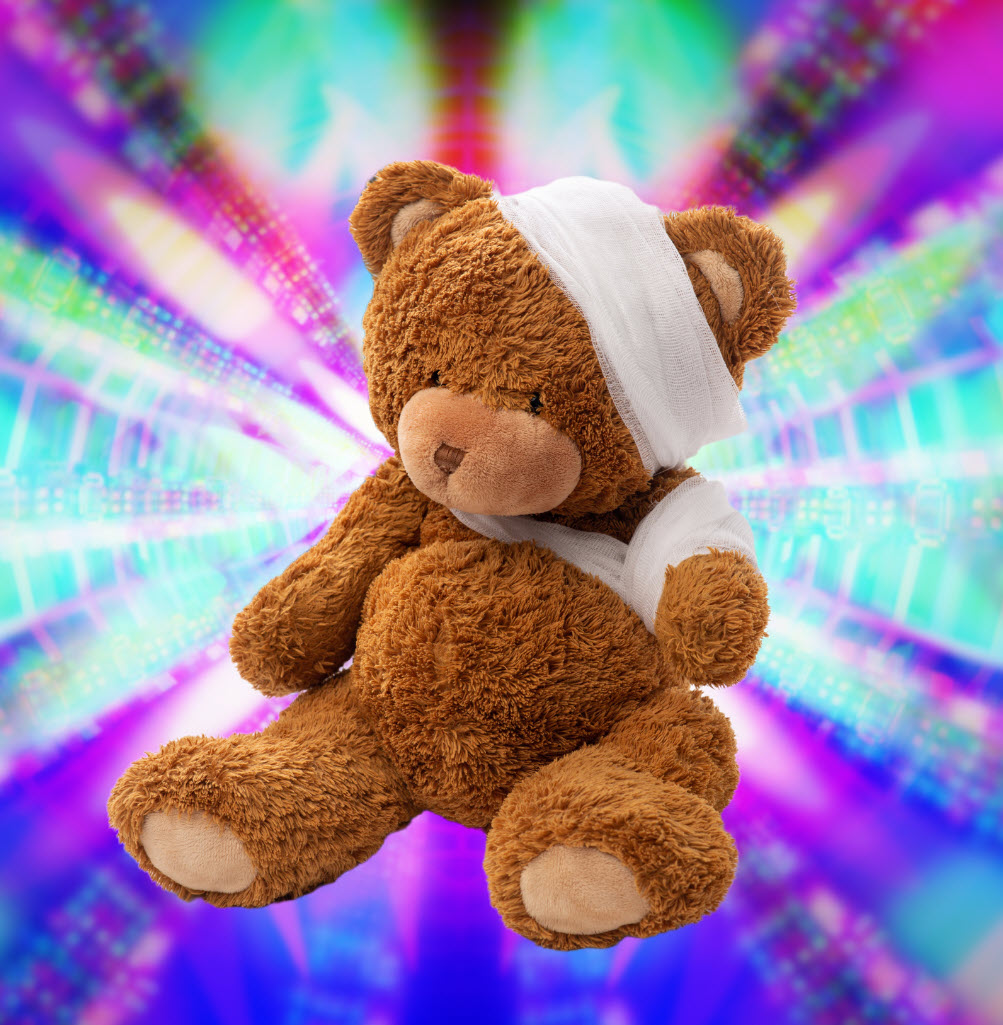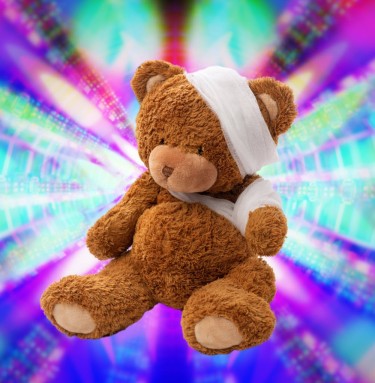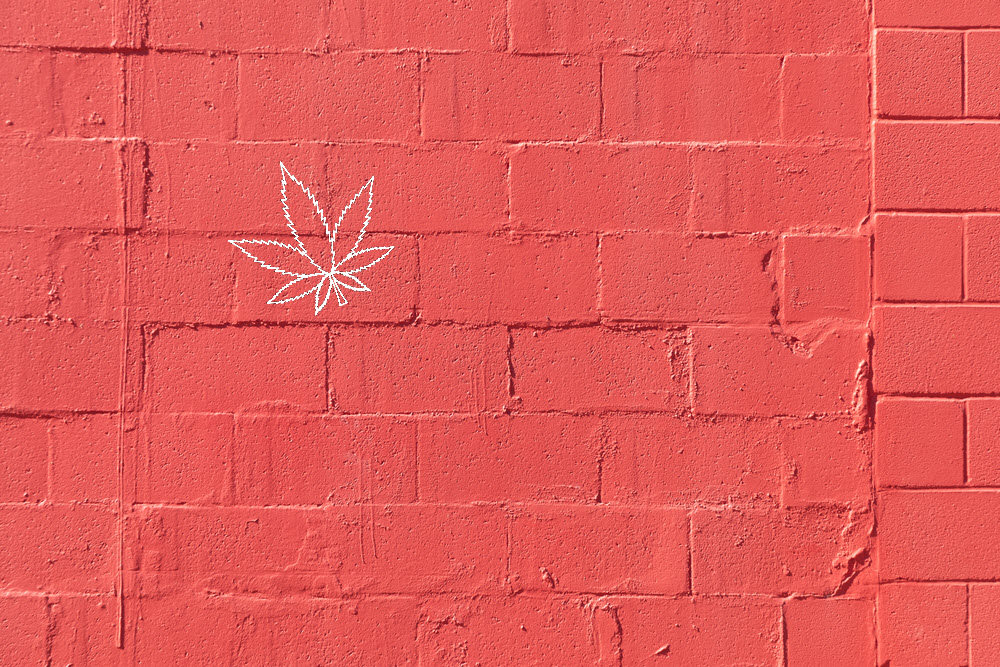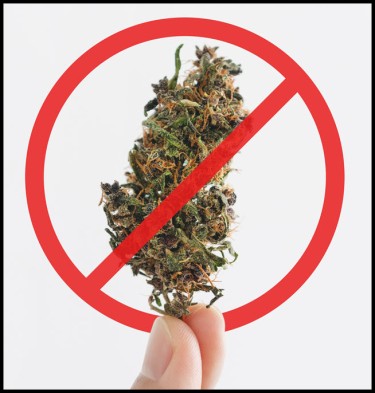Cannabis News
Should You Try Shrooms to Deal with a Childhood Trauma?
Published
12 months agoon
By
admin

Study Shows That Psilocybin Helps Treat Symptoms Of Childhood Trauma
According to studies, a majority of adults suffer from symptoms of childhood trauma.
A Palo Alto University study, some 61% of American adults have suffered at least one experience that constitutes as an “Adverse Childhood Experience”. These types of experiences vary greatly, ranging from neglect to sexual abuse, physical abuse, and emotional abuse. It can also include homelessness, racism, school or community violence, violent loss of a family member, and much more.
Even kids who are witness to some type of traumatic event face the risk of developing more mental and physical illnesses when they get older.
Many adults today are still struggling to recover from different kinds of traumatic situations that they faced as young children and teens. The symptoms that show up in adults include severe anxiety, inability to regulate emotions, panic attacks, depression, sleep issues, chronic inflammation, stress, and self-harm to name a few. Therapy certainly helps, but oftentimes it takes years of expensive therapy to truly heal – if any.
Thankfully, psychedelic medicine – psilocybin in particular – has been shown to be promising in the treatment of childhood trauma.
A recent study, published in the Journal of Psychoactive Drugs, takes a deep dive into adverse childhood experiences and how these can present serious risks for psychological conditions, as reported by High Times. The researchers, which hailed from notable educational institutions including Simon Fraser University, University of British Columbia, University of Michigan, and Athabasca University, analyzed if psilocybin could help mitigate the effects of psychological distress.
For the study, they polled 1,249 Canadian individuals who were at least 16 years old. They were asked to answer a questionnaire that evaluated conditions relating to childhood trauma. In addition, the participants were surveyed about their consumption of psilocybin, such as the last time they partook, how often, and how strong their doses were.
The results revealed that participants who consumed psilocybin within the last 3 months revealed a reduced impact of adverse childhood experiences and its effect on psychological distress. Additionally, the results were also dose-dependent; they found that participants who had greater exposure to these drugs had improved psychological well-being.
“In recent years, renewed interest in psychedelic medicine has highlighted the therapeutic potential of psilocybin for those who have experienced childhood adversity,” they wrote. “However, recreational psilocybin use remains illegal and access to approved therapeutics is difficult. Such use provides an opportunity to explore the therapeutic potential of psilocybin for psychological distress among people with adverse childhood experiences,” they discuss.
Furthermore, the authors added that “feasibility studies suggest that psilocybin has a good safety profile and low addiction potential, particularly at low doses and even among those with complex psychiatric needs.” They also emphasized the importance of using psilocybin under the care of a healthcare provider to prevent unwanted results such as bad trips.
“Taken together, these findings suggest that psilocybin therapy may be potentially acceptable and may feasibly help in supporting survivors of adverse childhood experiences with particularly strong benefits to those with more severe childhood adversity,” they wrote.
Psilocybin Has Strong Potential For Treating Symptoms Of Trauma
Psilocybin has a growing number of studies backing up its potential to treat symptoms of trauma, which are among the most difficult mental health conditions to manage. While medical authorities have extensive knowledge of what exactly can cause trauma, we still know very little how to treat it. The symptoms vary greatly from one person to another, so there is no standardized dose or care of any kind of medication that has been proven to treat it.
For many decades, Selective Serotonin Reuptake Inhibitors (SSRIs) have been a conventional treatment method for patients of depression, anxiety, and PTSD. Serotonin is the neurotransmitter that is responsible for helping us regulate our moods. The problem with these pharmaceutical drugs is that they come with horrific side effects for the patients that use them.
The good thing about psilocybin is that it also acts on the same serotonin receptors that SSRI’s do, but it also reaps numerous valuable benefits for mental health. Psilocybin works in a different mechanism especially in inducing neuroplasticity, making it simpler for patients to learn new things and even manage painful memories.
A study conducted by Stephen Ross, MD, an NYU Langone psychiatrist, focused on cancer patients who were terminally ill. He found that just one dose with psilocybin was enough to help provide relief from the emotional distress that plagued 80% of subjects for over 6 months. The patients who were given psilocybin reported a great improvement in quality of life, expressing an interest to do more external activities, having newfound energy, performed better at work, and had better relationships with family members.
According to the researchers, if psilocybin was effective in treating the psychological impact associated with being terminally ill with cancer, it could be used for treating less severe conditions that are also associated with psychological distress.
According to Dr. Ross, the findings “have the potential to transform the care of cancer patients with psychological and existential distress, but beyond that, it potentially provides a completely new model in psychiatry of a medication that works rapidly as both an antidepressant and anxiolytic and has sustained benefit for months,” he says.
“If larger clinical trials prove successful, then we could ultimately have available a safe, effective, and inexpensive medication – dispensed under strict control – to alleviate the distress that increases suicide rates among cancer patients,” he adds.
Conclusion
There is such a great amount of information out there that enables anyone to self-medicate with psilocybin. Just be sure to do your research, though it’s always recommended to do so under the care of an experienced healthcare provider.
CANNABIS AND TRAUMA HISTORY, READ ON…
You may like
Cannabis News
The Red Wall Blocking Marijuana Legalization in America, Real or Imagined?
Published
17 minutes agoon
November 21, 2024By
admin

As the movement for marijuana legalization gains momentum across the United States, a significant barrier remains in place in many conservative states, forming what advocates and analysts have termed a “red wall.” This phenomenon highlights the stark divide between states that have embraced cannabis reform and those that continue to criminalize its use, particularly in areas where Republican leadership is firmly entrenched. This article will explore the current landscape of marijuana legalization, the factors contributing to this resistance, and the implications for consumers and advocates alike.
The Current State of Marijuana Legalization
Over the past decade, public opinion regarding marijuana has shifted dramatically. According to recent polls, approximately 68% of Americans support legalizing cannabis for recreational use. This shift has translated into legislative action, with 38 states and the District of Columbia allowing medical marijuana and 24 states legalizing it for recreational use. States like California, Colorado, and Illinois have set precedents with robust frameworks for both medical and recreational cannabis markets.
Despite this progress, a significant number of states remain resistant to change. As of 2024, there are still 20 states where marijuana is illegal for recreational use, many of which are governed by Republican majorities. This resistance is often attributed to a combination of political ideology, cultural attitudes, and concerns about public safety.
The Red Wall: A Political Barrier
The term “red wall” refers to the political landscape in conservative states where Republicans maintain control over both legislative chambers and the governor’s office—known as a trifecta. In these states, efforts to legalize cannabis face substantial obstacles due to party alignment and prevailing conservative values.
States such as Wyoming, Idaho, and Nebraska exemplify this red wall. Here, despite growing public support for legalization, lawmakers remain hesitant to advance legislation or allow ballot initiatives that would enable voters to decide on cannabis reform. The result is a patchwork of laws that leaves millions of Americans in conservative regions without access to legal cannabis.
Factors Contributing to Resistance
One of the primary reasons for the red wall against marijuana legalization is the deeply ingrained political ideology within conservative circles. Many Republican leaders view cannabis as a moral issue rather than a public health or economic one. This perspective is often rooted in traditional values that prioritize law and order over personal freedom.
Additionally, some conservative lawmakers express concerns about the potential societal impacts of legalization, including increased drug use among youth and impaired driving incidents. These fears can overshadow empirical evidence from states that have legalized cannabis, which often show no significant increase in youth usage or traffic accidents.
Cultural attitudes toward marijuana also play a significant role in shaping policy decisions in conservative states. In many regions, cannabis remains stigmatized as a dangerous drug associated with criminal behavior. This stigma can lead to fear-based policymaking that prioritizes prohibition over regulation.
Moreover, conservative communities may have strong ties to traditional industries such as agriculture and law enforcement that view marijuana legalization as a threat to their interests. These cultural dynamics create an environment where lawmakers are reluctant to support reform efforts that could alienate their constituents or undermine their political base.
Legislative Challenges
In addition to ideological resistance, practical legislative challenges further complicate efforts to advance marijuana legalization in conservative states. Many red wall states have stringent requirements for ballot initiatives or legislative proposals that make it difficult for advocates to gain traction.
For instance, some states require an exceptionally high percentage of signatures from registered voters to qualify for a ballot initiative. In Florida, a recent attempt to legalize recreational cannabis fell short of the required 60% supermajority needed for passage, despite receiving majority support from voters. Such hurdles can stifle grassroots efforts and limit opportunities for public input on cannabis policy.
Recent Developments in Red Wall States
Historically, ballot initiatives have been an effective strategy for advancing marijuana legalization in various states. However, this approach has faced increasing challenges in conservative strongholds. In North Dakota and South Dakota, recreational cannabis measures were defeated again in 2024 after previous attempts had also failed.
In South Dakota specifically, voters approved a legalization measure in 2020 only to see it challenged by state officials who argued it was unconstitutional. This led to protracted legal battles that ultimately stalled implementation efforts. Such experiences highlight how state officials can actively work against voter-approved measures when they conflict with prevailing political ideologies.
Legislative Efforts: Stalled Progress
In addition to ballot initiatives failing at the polls, legislative efforts in red wall states have also struggled to gain traction. For example:
-
Kansas: Despite growing support among residents for medical marijuana legalization, Republican lawmakers have repeatedly blocked proposals aimed at establishing a regulated medical program.
-
Kentucky: Efforts to legalize medical cannabis have faced significant hurdles in the state legislature despite bipartisan support among constituents.
-
Wisconsin: Governor Tony Evers has proposed measures to legalize both medical and recreational marijuana; however, these proposals have consistently met resistance from Republican-controlled legislative chambers.
These examples illustrate how even when there is public support for reform, entrenched political opposition can thwart progress.
Implications for Consumers and Advocates
Continued Criminalization
The persistence of the red wall means that millions of Americans living in conservative states continue to face criminal penalties for cannabis use. Individuals caught with small amounts of marijuana can face fines or even jail time disproportionately affecting marginalized communities.
Moreover, the lack of legal access forces consumers into unregulated markets where product safety cannot be guaranteed. This situation poses health risks associated with untested products and contributes to ongoing cycles of criminalization rather than promoting responsible use through regulation.
Economic Consequences
The economic implications of maintaining prohibition are significant as well. States that refuse to legalize cannabis miss out on substantial tax revenue generated from regulated markets. For instance:
-
Colorado: Since legalizing recreational marijuana in 2014, Colorado has generated over $1 billion in tax revenue from cannabis sales.
-
California: The state’s legal cannabis market is projected to generate billions annually in tax revenue—money that could be used for education, infrastructure, and public health initiatives.
In contrast, conservative states that uphold prohibition forego these potential revenues while also incurring costs associated with enforcing drug laws and managing related criminal justice issues.
Advocacy Strategies Moving Forward
Given the challenges posed by the red wall, advocates for marijuana legalization must adapt their strategies if they hope to make progress in conservative states:
The Future of Marijuana Legalization
As we look ahead, it is clear that overcoming the red wall will require persistent effort from advocates committed to changing hearts and minds within conservative states. While progress may be slow and fraught with challenges, shifts in public opinion suggest that change is possible.
The ongoing conversation surrounding federal rescheduling under President Biden’s administration could also influence state-level policies. If cannabis were moved from Schedule I to Schedule III under federal law—a move some speculate could happen under future administrations—states might feel pressured to reconsider their own prohibitive laws.
Ultimately, navigating this complex landscape will require resilience from advocates who understand both the political realities at play and the potential benefits of legalization for consumers and society as a whole.
Conclusion
The “red wall” against marijuana legalization represents a formidable barrier within many conservative states where outdated perceptions about cannabis persist alongside strong political opposition. As public opinion continues to evolve nationally favoring greater acceptance of both medical and recreational use advocates must adapt their strategies accordingly.
By building coalitions across diverse groups and focusing on education at the community level while pursuing incremental reforms where possible, advocates can work toward dismantling this barrier over time. The journey toward comprehensive marijuana reform may be long and challenging; however, with sustained effort and commitment from supporters across all sectors of society including those residing behind the red wall progress is achievable.
CONSERVATIVES BLOCKING CANNABIS BILLS?, READ ON…


https://www.marijuanamoment.net/researcher-asks-federal-court-to
-halt-dea-marijuana-rescheduling-hearings-over-allegations-of-illegal-proceedings-and-agency-bias/
When the Biden administration announced plans to reschedule cannabis to Schedule III, many cannabis advocates celebrated what they saw as a step toward legitimacy. I wasn’t among them. From the beginning, I’ve argued that Schedule III is nothing more than a sweet spot for Big Pharma – allowing them to maintain control while giving the illusion of progress. Cannabis doesn’t belong on the Controlled Substances Act at all, and frankly, the CSA itself is an outdated relic that needs to be abolished.
But even for those who embraced the Schedule III proposition, reality is about to hit hard. A researcher has just filed a lawsuit against the DEA, alleging multiple violations in the rescheduling process – from ignoring Native American tribes to sidelining small businesses. This is just the beginning of what promises to be a lengthy legal battle from all sides. Prohibitionists will fight to maintain strict control, while reform advocates will push for complete descheduling. Big Pharma, meanwhile, will work behind the scenes to ensure any changes benefit their bottom line.
The DEA’s rescheduling process was never going to be smooth sailing. Cannabis is too complex, too deeply woven into our culture and commerce to be neatly categorized under the CSA’s rigid framework. It’s a plant that’s been used medicinally and spiritually for millennia – trying to force it into the same regulatory box as synthetic pharmaceuticals is like trying to fit a square peg into a round hole.
There’s only one sensible path forward: complete descheduling coupled with a comprehensive national framework for legalization. Anything less will result in years of legal battles, regulatory confusion, and continued barriers to access. Those hoping Schedule III is just around the corner are in for a rude awakening. The lawfare is just beginning, and it’s going to be a long, messy fight.
Let’s look at how this legal battle is shaping up and why Schedule III may be dead on arrival…
David Heldreth’s lawsuit against the DEA marks the opening salvo in what promises to be a protracted legal battle over cannabis rescheduling. As CEO of Panacea Plant Sciences, Heldreth’s grievances strike at the heart of the DEA’s process, alleging multiple violations that could potentially derail the entire rescheduling effort.
The core complaints are substantial: The DEA failed to consult Native American tribes, despite the significant impact rescheduling would have on tribal law enforcement and health services. They’ve effectively shut out small businesses from the process, favoring larger entities already positioned for Schedule III licensing. Perhaps most damning, Heldreth claims the DEA deliberately excluded his company from scheduled hearings despite timely requests to participate, suggesting potential bias in the selection process.
These allegations come after a whirlwind of activity from the DEA. Following Biden’s directive to reconsider cannabis classification, the agency received over 43,000 public comments and scheduled hearings for December 2nd. However, only 25 participants were selected to testify – a suspiciously small number given the industry’s size and scope.
While Heldreth’s legal arguments appear sound – particularly regarding tribal consultation requirements and constitutional questions about DEA judge appointments – the judiciary’s historical deference to administrative agencies might prove challenging. Courts typically give agencies broad latitude in implementing federal law, making this an uphill battle.
But here’s the crucial point: whether Heldreth’s lawsuit succeeds may be less important than its role as a blueprint for future legal challenges. Prohibitionist groups like Smart Approaches to Marijuana (SAM) are already sharpening their legal knives, preparing to challenge every aspect of the rescheduling process. They’ve made it clear they’ll use every available legal tool to keep cannabis in Schedule I.
We’re likely to see challenges from multiple angles: constitutional arguments, administrative procedure violations, environmental impact concerns, and public health disputes. Each lawsuit, regardless of merit, will add months or years of delays to the process. Even if most fail, it only takes one successful challenge to throw the entire rescheduling effort into chaos.
Schedule III isn’t just facing a single legal battle – it’s staring down the barrel of a full-scale legal war. In the labyrinthine American court system, determined opponents with deep pockets can keep issues tied up in litigation almost indefinitely. This is where Schedule III will likely meet its end – not through a single knockout blow, but through death by a thousand legal cuts.
Let’s be frank – Schedule III was never going to be the victory cannabis advocates needed. Its death by litigation, while frustrating, might be exactly what we need to push for real, meaningful reform. Sometimes good things have to fail for better things to emerge.
The next four years present a unique window of opportunity. With Republicans poised to control significant portions of government, we’re entering a period where comprehensive cannabis reform could actually happen – if approached correctly. The key is framing reform in terms Republicans can embrace: states’ rights, economic opportunity, and reduced federal overreach.
There’s buzz about Trump potentially descheduling cannabis completely. While this would be revolutionary, I’ve learned to temper expectations when it comes to campaign promises. Until I see the executive order signed or legislation passed, I’ll maintain healthy skepticism. We’ve been burned by political promises before.
However, what’s genuinely exciting is the potential for Republican-led cannabis reform. With proper framing – emphasizing personal liberty, economic growth, and dismantling bureaucratic overreach – we could see a conservative-friendly cannabis bill that actually addresses the core issues rather than dancing around them like Schedule III would have.
Think about it: Republicans could simultaneously stick it to their Democratic rivals while claiming a major policy win that’s increasingly popular with their base. It’s the kind of political opportunity that doesn’t come along often. Young conservative voters overwhelmingly support legalization, and older conservatives are increasingly seeing the economic and medical benefits.
The public support is there – recent polls show over 70% of Americans favor legalization. If there was ever a time for bold action rather than half-measures like Schedule III, it’s now. We need legislation that respects the complexity of cannabis while ensuring access and promoting innovation.
Perhaps the Schedule III debacle will prove to be a blessing in disguise, forcing lawmakers to confront the reality that the Controlled Substances Act itself is the problem. Sometimes you have to hit rock bottom before real change can happen. In cannabis policy, we might finally be reaching that point.
The death of Schedule III could be the birth of something much better – if we’re ready to seize the opportunity.
The imminent death of Schedule III in the courts isn’t a tragedy – it’s the predictable end to a political charade. Biden’s administration dangled cannabis reform like a carrot before voters, but Schedule III was never going to deliver the comprehensive changes our communities need. It was theater, designed to appear progressive while maintaining the status quo that benefits big pharmaceutical companies.
Yes, the Biden administration made history by initiating the rescheduling process. But let’s be honest about what they actually achieved: pardons that affected virtually no one currently incarcerated, rescheduling proposals that would primarily benefit corporate interests, and plenty of talk about reform while people continue sitting in cells for cannabis offenses.
Looking ahead to Republican control, I’m not holding my breath for meaningful cannabis reform. But politics makes strange bedfellows, and the cannabis issue doesn’t fit neatly into partisan boxes anymore. There’s a slim chance – maybe out of genuine belief in personal freedom, maybe just to spite Democrats – that Republicans could deliver real reform.
The death of Schedule III in endless litigation could force both parties to confront an uncomfortable truth: the Controlled Substances Act itself is the problem. Cannabis doesn’t belong in any schedule – it’s a plant that humans have cultivated and used for millennia. Trying to force it into the CSA’s framework is like trying to regulate tomatoes as pharmaceuticals.
What we need now isn’t another bureaucratic reshuffling, but a complete rethinking of how we approach cannabis policy. Whether that comes from Republicans seeking a win, Democrats finally embracing real reform, or a bipartisan recognition that the current system is broken doesn’t matter. What matters is that we stop accepting half-measures and start demanding real change.
The Schedule III saga may be ending, but the fight for sensible cannabis policy continues. The only question is whether our politicians will finally listen to the 70% of Americans who support legalization, or if they’ll keep playing games with rescheduling while real people suffer under prohibition.
WHO WINS WITH SCHEDULE 3? READ ON…


The conversation surrounding marijuana has transformed significantly over the past decade, particularly as legalization spreads across various regions. As societal attitudes shift, more women are exploring cannabis not just for recreational use but for its potential health and wellness benefits. A recent poll reveals that these benefits are a primary draw for women, while price remains a pivotal concern. This article delves into the reasons why women are increasingly turning to marijuana, the specific health benefits they seek, and the implications of pricing in this evolving market.
The Growing Interest in Cannabis Among Women
Historically, marijuana has been associated with negative stereotypes and stigma. However, as research highlights its medicinal properties, perceptions are changing. Women are at the forefront of this shift, seeking alternatives to traditional medications for managing health issues. The increasing acceptance of cannabis is reflected in various surveys indicating that women are more likely than men to use marijuana for therapeutic purposes.
Demographic Trends
Women aged 25-45 represent one of the fastest-growing segments of cannabis users. This demographic often seeks solutions for stress relief, chronic pain management, and mental health support—issues that significantly impact their quality of life. As more women become informed about the potential benefits of cannabis, their willingness to incorporate it into their wellness routines grows.
Health and Wellness Benefits of Marijuana
1. Pain Relief
One of the most compelling reasons women turn to marijuana is for pain management. Cannabinoids, such as THC and CBD, interact with the body’s endocannabinoid system to help modulate pain perception. Conditions like endometriosis, fibromyalgia, and arthritis disproportionately affect women, making effective pain relief essential.
Studies have shown that medical marijuana can significantly reduce chronic pain symptoms. For instance, a study published in the *Journal of Pain Research* found that patients using medical cannabis reported a 64% reduction in pain. This evidence resonates with women seeking alternatives to opioids, which carry risks of addiction and adverse side effects.
2. Anxiety Reduction
Anxiety is a prevalent issue among women, often exacerbated by societal pressures and responsibilities. Cannabis has been studied for its anxiolytic properties, making it an attractive option for those looking to manage anxiety without relying on prescription medications.
CBD is particularly noteworthy for its potential to alleviate anxiety without producing psychoactive effects. Research published in The Permanente Journal found that 79% of participants experienced reduced anxiety levels after using CBD oil. This finding is significant for women who may be hesitant to use THC-dominant products due to concerns about psychoactivity.
3. Improved Sleep Quality
Many women struggle with sleep disorders due to hormonal fluctuations, stress, or lifestyle factors. Cannabis has been shown to improve sleep quality by promoting relaxation and reducing anxiety.
A study from the University of Colorado Boulder indicated that participants who used cannabis before bedtime reported better sleep quality compared to those who did not use it. This is particularly relevant for women juggling multiple responsibilities that can interfere with restful sleep.
4. Menstrual Health Support
Menstrual discomfort is another area where many women find relief through cannabis use. The muscle-relaxing properties of marijuana can alleviate cramps and other menstrual symptoms.
While more research is needed in this area, many women report finding relief from menstrual symptoms through cannabis use. Some companies have developed products specifically targeting menstrual discomfort, such as CBD-infused creams and edibles designed for this purpose.
The Appeal of Natural Remedies
A Shift Toward Holistic Health Approaches
The growing interest in natural remedies reflects a broader trend toward holistic health among women. Many are seeking alternatives to traditional pharmaceuticals due to concerns about side effects and long-term dependency on medications. Cannabis is often viewed as a natural option that can provide relief without the risks associated with conventional treatments.
Empowerment Through Self-Care
The rise of self-care culture empowers women to take control of their health choices actively. By choosing cannabis as a wellness tool, many feel they are making informed decisions about their bodies and well-being an essential aspect of fostering a positive relationship with health management.
Pricing: A Barrier to Access
Despite the numerous benefits associated with marijuana use among women, price remains a significant barrier to access. As the market evolves with increased competition among producers, understanding pricing dynamics becomes crucial for both consumers and businesses.
The cost of cannabis products can vary widely based on factors such as location, product type (flower vs. edibles vs. concentrates), and quality. High prices can deter many women from trying or continuing to use cannabis for therapeutic purposes.
As of late 2023, average prices for cannabis products have fluctuated due to market changes. In some legal states, prices have dropped significantly averaging around $5 per gram which could enhance accessibility for consumers. However, premium products often command much higher prices.
The Impact of Legalization on Pricing
Legalization has led to increased competition among dispensaries and growers, which can drive prices down over time. However, taxes imposed on legal cannabis sales can also contribute to higher retail prices. Women seeking affordable options may find themselves navigating a complex landscape where product quality must be weighed against cost.
The Future Landscape of Cannabis Use Among Women
Increasing Acceptance and Education
As research continues to highlight the benefits of marijuana for various health issues, acceptance among women is likely to grow further. Education plays a critical role in this process; as more information becomes available about safe usage practices and product options tailored specifically for women’s health needs.
Tailored Products for Women’s Health
The cannabis industry is beginning to recognize the unique needs of female consumers by developing products specifically designed for women’s health issues from menstrual relief products infused with CBD to formulations aimed at reducing anxiety or enhancing sleep quality.
Market Trends Indicating Growth
Market trends indicate an increasing demand for female-focused cannabis products. Companies are starting to create brands that cater specifically to women’s wellness needs offering everything from tinctures designed for hormonal balance to edibles aimed at stress relief.
Conclusion
The growing interest among women in the health and wellness benefits of marijuana underscores a significant shift in societal attitudes toward this once-stigmatized plant, with its potential applications ranging from pain management to anxiety relief and menstrual health support, making cannabis an appealing alternative for those seeking natural remedies; however, pricing remains a critical concern that cannot be overlooked, as addressing affordability will be essential in ensuring that all consumers can access these beneficial products amidst an evolving market characterized by increased competition and changing regulations. Ultimately, education about both the benefits and costs associated with cannabis use will empower women—and all consumers—to make informed decisions regarding their health choices, highlighting that both awareness and accessibility will play vital roles in shaping the future landscape of cannabis consumption among women, a landscape defined by empowerment through informed self-care practices.
FEMALE CONSUMERS BUYING WEED, READ ON…
FEMALES AGED 19 TO 30 ARE BUYING MARIJUANA AT A RECORD PACE!

The Red Wall Blocking Marijuana Legalization in America, Real or Imagined?

Minnesota Office of Cannabis Management Issues Rejections to Majority of Social Equity Applicants

Find LivWell in Colorado

Find Verilife in Massachusetts

Find Verilife in Illinois

Find Verilife in New York

Ohio Non-Medical Cannabis is available at Verilife

Where quality meets savings: Independently owned Giving Tree offers fantastic deals

California’s capital city OKs marijuana consumption lounge licenses

Can Marijuana Consumers Donate Needed Blood

Distressed Cannabis Business Takeaways – Canna Law Blog™

United States: Alex Malyshev And Melinda Fellner Discuss The Intersection Of Tax And Cannabis In New Video Series – Part VI: Licensing (Video)

What you Need to Know

Drug Testing for Marijuana – The Joint Blog

NCIA Write About Their Equity Scholarship Program

It has been a wild news week – here’s how CBD and weed can help you relax

Cannabis, alcohol firm SNDL loses CA$372.4 million in 2022

A new April 20 cannabis contest includes a $40,000 purse

Your Go-To Source for Cannabis Logos and Designs

City Of Oakland Issues RFP For Employee Training Programs
Trending
-

 Cannabis News2 years ago
Cannabis News2 years agoDistressed Cannabis Business Takeaways – Canna Law Blog™
-

 One-Hit Wonders2 years ago
One-Hit Wonders2 years agoUnited States: Alex Malyshev And Melinda Fellner Discuss The Intersection Of Tax And Cannabis In New Video Series – Part VI: Licensing (Video)
-

 Cannabis 1012 years ago
Cannabis 1012 years agoWhat you Need to Know
-

 drug testing11 months ago
drug testing11 months agoDrug Testing for Marijuana – The Joint Blog
-

 Education2 years ago
Education2 years agoNCIA Write About Their Equity Scholarship Program
-

 Cannabis2 years ago
Cannabis2 years agoIt has been a wild news week – here’s how CBD and weed can help you relax
-

 Marijuana Business Daily2 years ago
Marijuana Business Daily2 years agoCannabis, alcohol firm SNDL loses CA$372.4 million in 2022
-

 California2 years ago
California2 years agoA new April 20 cannabis contest includes a $40,000 purse







